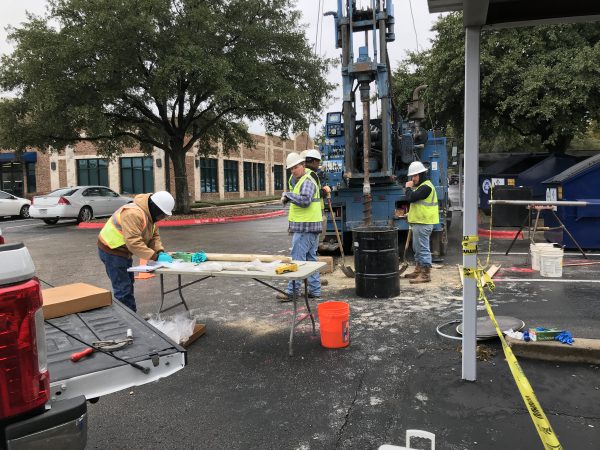CEC Services
- Landscape Architecture/Land Planning
- Predevelopment Site Investigations
- Site Infrastructure Maintenance/Rehabilitation
- Stormwater Management/BMP Design
- Utility Design
- Brownfield Redevelopment Services
- Groundwater Monitoring and Assessment
- Phase I & II Assessments
- Risk Assessments
- Site Characterization
- ALTA NSPS Land Title Surveys
- Construction Surveys/Staking

Owner Objective
An Austin-area real estate developer was in contract to purchase and redevelop a commercial property in north Austin for the purpose of redeveloping the property with multi-family residential units. At the time CEC was engaged, the property consisted of three buildings, including a gym, office spaces, and other retail tenants, with a paved parking lot. The property’s former use was industrial manufacturing. When the manufacturing facility closed in the 1990s, a subsurface investigation was conducted. Due to minor impacts to groundwater at that time, limitations were placed on use of the property in the form of a restrictive covenant on the deed, which said the property was suitable for commercial use. This developer has used CEC Austin for site development in the past and engaged CEC for the Phase I Environmental Site Assessment (ESA).
CEC Approach
After determining during the Phase I ESA that there was Texas Commission on Environmental Quality (TCEQ) paperwork incorrectly indicating active waste management units and a restrictive covenant that didn’t include residential use, CEC performed an in-depth agency file review and discussed the issue with the TCEQ. To give the TCEQ the current subsurface conditions, CEC conducted a limited soil and groundwater investigation in the parking lot. The results indicated that the site now meets the residential criteria and CEC advised the client/owner to enter the Voluntary Cleanup Program (VCP), during which CEC prepared an Affected Property Assessment Report (APAR) showing that the minor contamination in the 1990s is now below the protective criteria for residential use. Through the VCP, the TCEQ then issued a clearance letter stating that the property is suitable for residential use. The clearance from the TCEQ allowed the client/owner to record a new affidavit of completion of response actions in the County deed records that allows for residential development at the property, upon which the TCEQ issued a certificate of completion.
This project saved money for the client/owner because just one day of site investigation activities was necessary to demonstrate that the property can be developed without remediation or engineering controls. Construction will begin when City of Austin construction permitting is fully approved.



